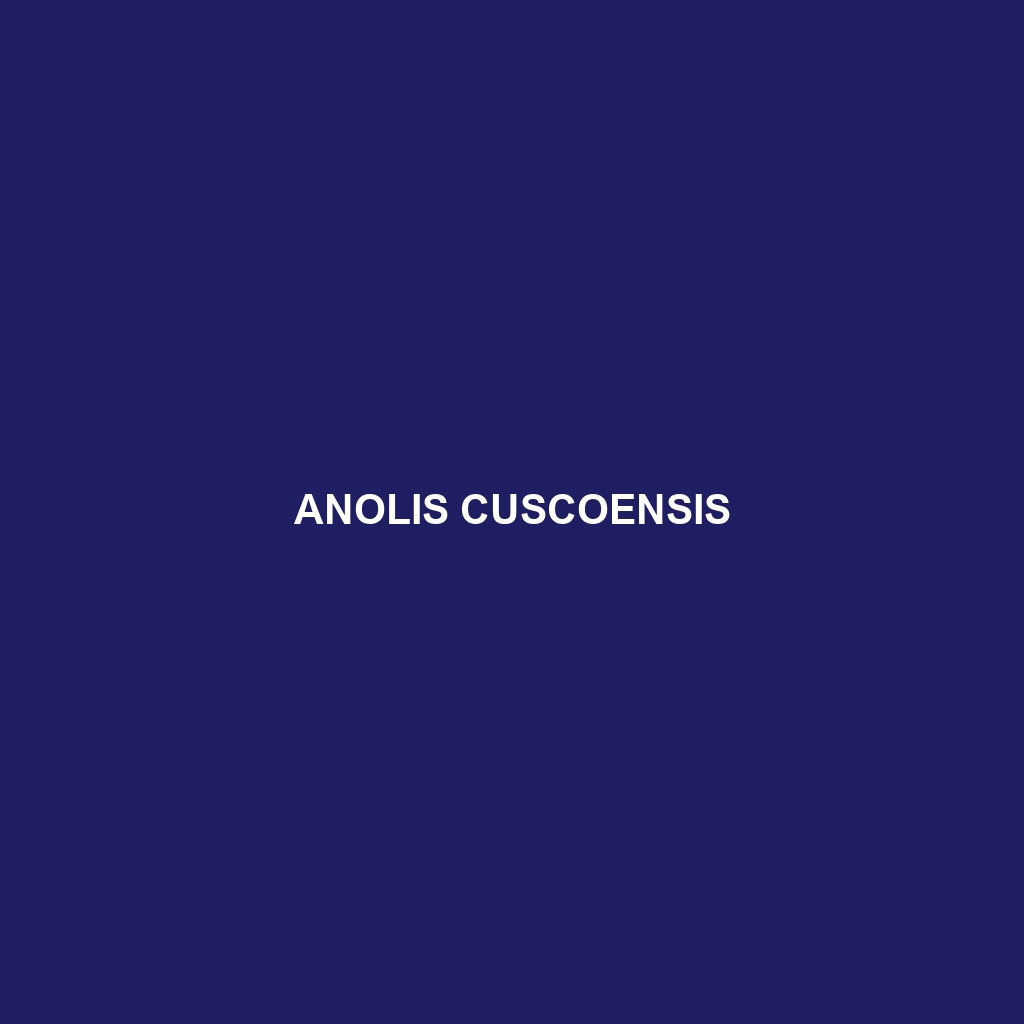Anolis cuscoensis: An Overview
Common Name: Anolis cuscoensis
Scientific Name: Anolis cuscoensis
Habitat
Anolis cuscoensis primarily inhabits the cloud forests of southeastern Peru, particularly in the Cusco region. This species thrives in humid environments characterized by a high canopy and dense vegetation, where it can often be found clinging to tree trunks and branches. Its elevation range typically spans from 1,500 to 3,000 meters above sea level, providing a unique niche within these biodiverse habitats.
Physical Characteristics
Anolis cuscoensis is a relatively small lizard, measuring approximately 6 to 8 cm in body length. Its coloration varies from vibrant greens to browns, allowing it to blend seamlessly with its leafy surroundings. Notable features include a distinct dewlap, which males display during courtship, and elongated limbs that aid in agile climbing. These adaptations are crucial for survival in their arboreal habitat.
Behavior
This species exhibits diurnal behavior, being most active during the day. Anolis cuscoensis is known for its territorial displays, particularly males who will engage in push-up displays and extend their dewlaps to attract females and deter rivals. They are also excellent climbers, often seen basking in the sun on tree branches or darting quickly to avoid predators.
Diet
Anolis cuscoensis primarily feeds on a diet of small insects such as ants, crickets, and leaf hoppers. Its hunting strategy involves ambushing prey from a perch, showcasing its quick reflexes and sharp vision. This insectivorous diet is vital for growth and reproductive success within its ecological niche.
Reproduction
Breeding occurs year-round for Anolis cuscoensis, with peak activity during the rainy season when temperatures and humidity are optimal. Females typically lay one to two eggs per clutch in hidden locations, such as under leaf litter or within crevices. The incubation period lasts about 30 to 40 days, leading to the emergence of small, independent hatchlings.
Conservation Status
As of now, Anolis cuscoensis is classified as ‘Vulnerable’ on the IUCN Red List of Threatened Species. The primary threats include habitat destruction due to deforestation and climate change, which significantly impacts its cloud forest ecosystem. Conservation efforts are critical to preserving this unique lizard and its habitat.
Interesting Facts
Anolis cuscoensis displays a remarkable ability to change its color in response to environmental conditions and stress, a feature that aids in camouflage. Additionally, it is part of a larger family of anoles that are notable for their diverse adaptive traits across various habitats.
Role in Ecosystem
This lizard plays an integral role in the cloud forest ecosystem, acting as both a predator of insects and a prey species for larger animals. By helping control insect populations, Anolis cuscoensis contributes to maintaining a balanced ecosystem. Its interactions with plant life, through behavior such as seed dispersal, further emphasize its ecological significance.
